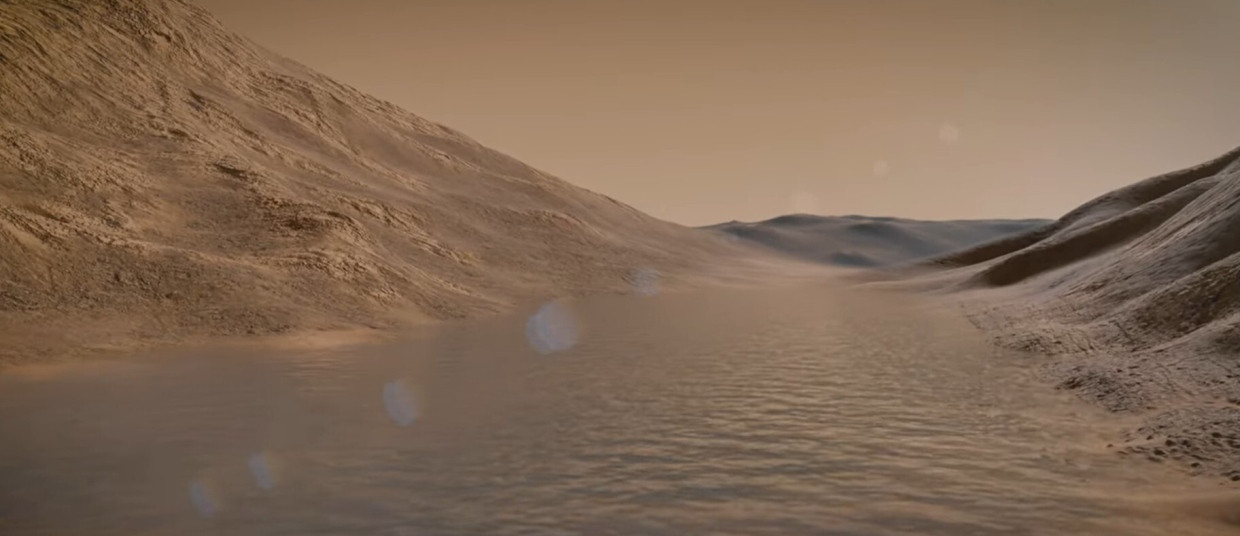Life on Mars?: New mineral discoveries raise old questions


Newly discovered minerals on Mars could be of biological origin. Only laboratory analyses on Earth could provide clarity. But a NASA sample-return mission has been canceled.
The current issue of the journal "Nature" published an analysis of data that the American rover Perseverance transmitted to Earth last year from a valley called Neretva Vallis on the western rim of the Jezero Crater on Mars. The data was sensational enough to prompt acting NASA Director General Sean Duffy to immediately comment in a press release : "This discovery by Perseverance, launched during President Trump's first term, is the closest thing yet to a discovery of life on Mars."
In fact, the article describes the discovery and identification of mineral grains in mudstone deposits deposited by a river in the valley more than three billion years ago. At that time, the atmosphere of what is now the Red Planet was still dense enough to allow the formation of liquid water. The river, long since dried up, flowed eastward into a lake filling Jezero Crater, forming a sedimentary fan that later fossilized and is now visible from Mars' orbit. The river valley and its sedimentary rocks were the primary reason NASA landed the SUV-sized Perserverence rover here in February 2021.

Now, the mobile probe has discovered small colored inclusions in a clay formation called "Bright Angel." Following a detailed analysis of the spectroscopic measurements taken by the rover's instruments, these inclusions contain enrichments of the iron minerals vivianite and gregite. The former is a phosphate, the latter a sulfide, and in both, the iron occurs in a reduced form, meaning its ions are only two electrons short of their atomic shells, not three like in the oxidized form that is common on Mars.
Neither vivianite nor greigite have yet been clearly identified on Mars. On Earth, they usually form in oxygen-poor environments under the influence of microorganisms that decompose organic material, such as vivianite in peat bogs. There, the minerals are reaction products of compounds produced by the metabolism of bacteria.
In oxidizing environments, however, they are still more energetic than minerals, whose iron atoms lack three electrons. They can therefore be further utilized by appropriately specialized bacteria. "The combination of chemical compounds we found in the Bright Angel Formation could have been a rich energy source for microbial metabolism," the NASA press release quotes Perseverance scientist Joel Hurowitz of Stony Brook University in New York, the lead author of the study.
However, vivianite and greigite sometimes form entirely without the involvement of a biosphere. This requires, however, persistently high temperatures and acidic conditions. The geological context in the Neretva Valley shows no trace of such conditions during the period of sediment deposition, especially none that indicate sufficiently high temperatures. So, do we finally have evidence of life on Mars—not one that's still active today, but at least billions of years ago, when floodwaters still flowed through the Neretva Valley?
Not at all. As geochemist Janice Bishop of the SETI Institute near San Francisco, an expert in Martian mineralogy, explains in an accompanying commentary in "Nature," such minerals could have formed on Mars without biological activity, just more slowly, over enormous geological time periods. However, there are methods—the study of isotope ratios—that could determine with a certain degree of probability whether the reduced phosphates and sulfides from the Neretva Valley originated biologically or not. Such analyses, however, can only be performed in laboratories on Earth.
This would require bringing the rock samples collected by Perseverance from the site where the minerals under discussion were discovered from Mars to Earth. NASA had planned such a "sample-return mission" for the 2030s. However, this plan was scrapped in the wake of drastic cuts to NASA's science budget.
Frankfurter Allgemeine Zeitung



